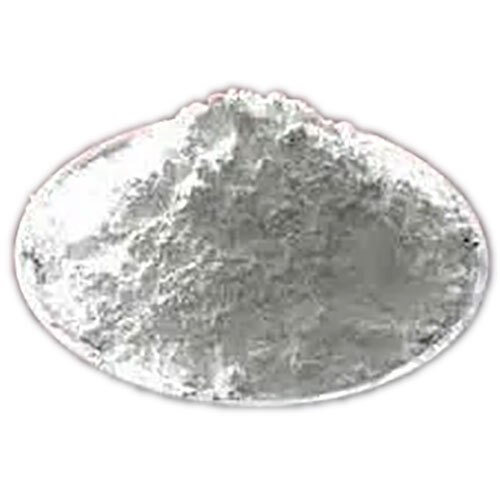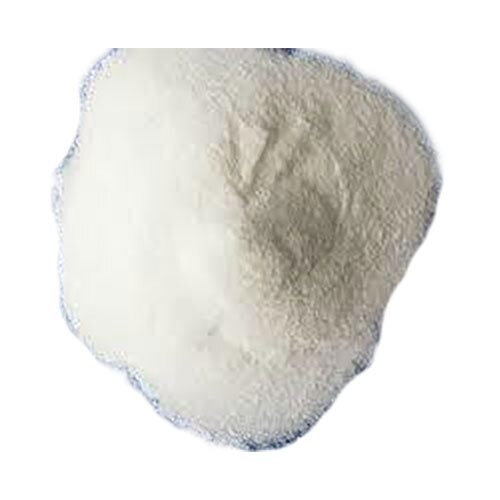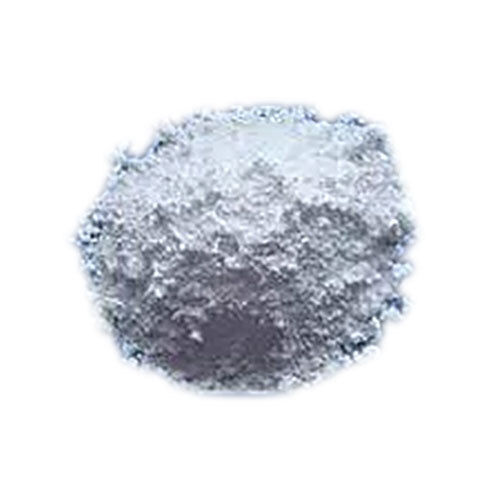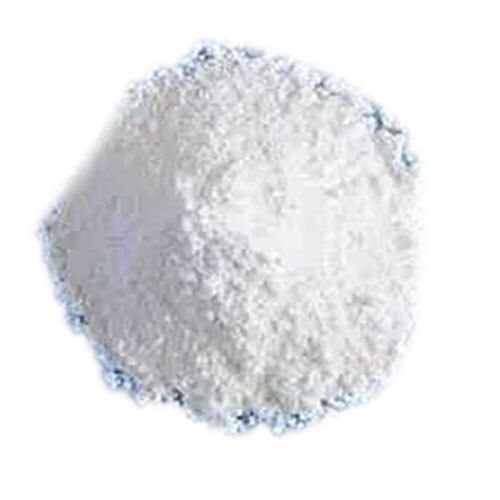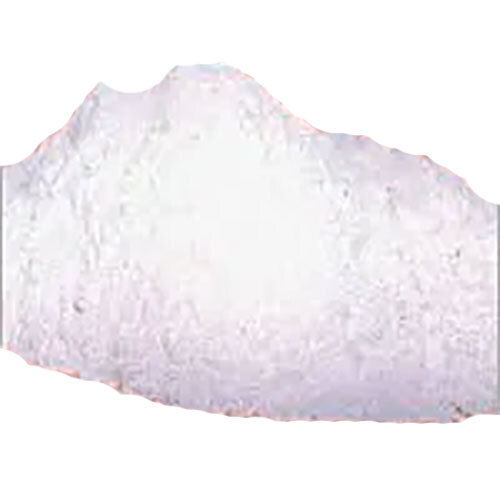
Alumina Trihydrate
Product Details:
- Purity 99%
- Application Industrial
- Physical Form Powder
- CAS No 21645-51-12
- Shelf Life 12 Months
- Solubility Water
- Molecular Formula Al(OH)3
- Click to view more
X
Alumina Trihydrate Price And Quantity
- 1000 Kilograms
Alumina Trihydrate Product Specifications
- 12 Months
- Water
- Al(OH)3
- Room Temperature
- Industrial Grade
- 99%
- Industrial
- Powder
- 21645-51-12
Alumina Trihydrate Trade Information
- 100 Kilograms Per Day
- 1 Days
Product Description
Alumina trihydrate (ATH) is a white, odorless, and tasteless powder with the chemical formula Al(OH)3. It is also known as aluminum trihydroxide or simply hydrated alumina. ATH is derived from bauxite ore through a Bayer process, which involves dissolving bauxite in sodium hydroxide.
Key properties and uses of alumina trihydrate include:
1. Flame Retardant: One of the primary applications of ATH is as a flame retardant. It releases water vapor when exposed to high temperatures, which helps to cool down and dilute flammable gases. This property makes ATH particularly useful in materials such as plastics, rubber, and textiles to improve their fire resistance.
2. Filler in Plastics: ATH is often used as a filler in plastics to enhance their mechanical and thermal properties. It can improve the strength, stiffness, and flame resistance of polymers.
3. Cable Insulation: Due to its flame-retardant properties, ATH is used in the production of cable insulation and sheathing materials to meet fire safety standards.
4. Solid Surface Materials: ATH is utilized in the production of solid surface materials, such as countertops and bathroom surfaces, to provide durability and fire resistance.
5. Paints and Coatings: It is used as a flame-retardant filler in some paints and coatings, providing fire protection to the underlying substrates.
6. Paper Industry: ATH can be used in the paper industry as a filler and coating pigment to enhance the opacity and brightness of paper products.
7. Water Treatment: In some cases, alumina trihydrate is used in water treatment processes to adjust the pH levels and remove impurities.
Alumina Trihydrate Properties:
1. Chemical Formula: Alumina trihydrate has the chemical formula Al(OH)3, indicating that it consists of aluminum (Al) atoms bonded to three hydroxide (OH) groups.
2. Appearance: ATH is a white, finely powdered substance. It is typically odorless and tasteless.
3. Solubility: Alumina trihydrate is practically insoluble in water. This low solubility contributes to its stability in various applications.
4. Hydration: ATH is often referred to as hydrated alumina because it contains water molecules. It has a crystalline structure with water molecules bound to the aluminum ions.
5. Flame Retardant Properties: One of the significant properties of ATH is its ability to act as a flame retardant. When exposed to heat, it releases water vapor and helps in cooling down the material, thereby inhibiting the spread of fire. This property makes it valuable in industries where fire resistance is crucial.
6. Thermal Decomposition: ATH decomposes endothermically when heated, losing its water content. This decomposition occurs at relatively high temperatures.
7. Density: The density of alumina trihydrate is relatively low, contributing to its lightweight characteristics. This can be advantageous in applications where weight is a consideration.
8. Refractive Index: ATH has a refractive index that makes it suitable for use in certain optical and coating applications.
9. pH Regulation: In water treatment applications, alumina trihydrate can be used to adjust pH levels due to its alkaline nature.
10. Inert Nature: Alumina trihydrate is generally inert, meaning it does not react significantly with other substances under normal conditions. This makes it suitable for various applications without causing unwanted chemical reactions.
11. Particle Size: The particle size of ATH can vary, and it is often finely ground to meet specific requirements in different industries.
Application of Alumina Trihydrate:
1. Flame Retardants: One of the primary uses of ATH is as a flame retardant. It is commonly added to materials such as plastics, rubber, textiles, and coatings to improve their fire resistance. ATH releases water vapor when exposed to high temperatures, cooling down the material and diluting flammable gases.
2. Plastics Industry: ATH is used as a filler and flame retardant in plastics. It enhances the mechanical and thermal properties of plastics, making them more resistant to fire and improving overall performance.
3. Cable and Wire Insulation: Due to its flame-retardant properties, ATH is employed in the production of cable insulation and sheathing materials. This ensures that cables meet fire safety standards, making them suitable for various applications.
4. Solid Surface Materials: ATH is used in the manufacturing of solid surface materials, such as countertops, sinks, and bathroom surfaces. Its fire-retardant and durability-enhancing properties make it a valuable additive in these applications.
5. Paints and Coatings: In the paint and coatings industry, ATH is used as a flame-retardant filler. It contributes to the fire resistance of the coated surfaces.
6. Adhesives and Sealants: ATH can be incorporated into adhesives and sealants to provide flame-retardant properties. This is especially important in applications where fire safety is a concern.
7. Rubber Industry: ATH is used in rubber compounds to improve fire resistance and mechanical properties. It is commonly employed in the production of flame-retardant rubber products.
8. Water Treatment: In water treatment processes, alumina trihydrate can be used to adjust pH levels and precipitate impurities. Its alkaline nature contributes to its effectiveness in certain water treatment applications.
9. Paper Industry: ATH is used in the paper industry as a filler and coating pigment. It enhances the opacity and brightness of paper products.
10. Pharmaceuticals: In some pharmaceutical formulations, alumina trihydrate may be used as an excipient or filler.
Alumina Trihydrate FAQ:
1. What is alumina trihydrate (ATH)?
Ans: Alumina trihydrate is a white, odorless, and tasteless powder with the chemical formula Al(OH)3. It is also known as hydrated alumina and is derived from bauxite ore through the Bayer process.
2. What are the key properties of alumina trihydrate?
Ans: Key properties of ATH include flame-retardant capabilities, low solubility in water, thermal decomposition at high temperatures, low density, and inert nature.
3. How does alumina trihydrate act as a flame retardant?
Ans: ATH acts as a flame retardant by releasing water vapor when exposed to high temperatures. This helps in cooling down the material and diluting flammable gases, thereby inhibiting the spread of fire.
4. In which industries is alumina trihydrate commonly used?
Ans: ATH is used in various industries, including plastics, rubber, textiles, coatings, cable insulation, solid surface materials, paints, adhesives, rubber products, water treatment, and the paper industry.
5. What role does alumina trihydrate play in the plastics industry?
Ans: In the plastics industry, ATH is used as a filler and flame retardant. It enhances the mechanical and thermal properties of plastics, making them more resistant to fire.
6. Can alumina trihydrate be used in water treatment?
Ans: Yes, alumina trihydrate can be used in water treatment processes to adjust pH levels and precipitate impurities. Its alkaline nature makes it effective in certain water treatment applications.
7. Is alumina trihydrate safe for use in consumer products?
Ans: Generally, alumina trihydrate is considered safe for use in various consumer products. However, like any chemical substance, proper handling and disposal procedures should be followed to ensure safety and environmental compliance.
8. What is the significance of ATH in cable and wire insulation?
Ans: ATH is used in cable insulation and sheathing materials to provide flame retardancy, ensuring that cables meet fire safety standards.
9. How does alumina trihydrate contribute to the paper industry?
Ans: In the paper industry, alumina trihydrate is used as a filler and coating pigment, improving the opacity and brightness of paper products.
10. Can alumina trihydrate be used in pharmaceuticals?
Ans: In some pharmaceutical formulations, alumina trihydrate may be used as an excipient or filler.
Tell us about your requirement

Price:
Quantity
Select Unit
- 50
- 100
- 200
- 250
- 500
- 1000+
Additional detail
Mobile number
Email


